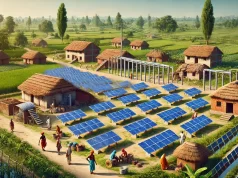The global energy crisis reminds us of the world’s continued reliance on fossil fuels for energy generation, despite efforts to move to renewable energy. International coal prices are increasing as a result of both an increase in demand and a disruption in supply. As India’s economy recovers from the fatal second wave of COVID-19, industries have resumed operations, resulting in a major rise in electricity consumption in the country. In contrast, Indian thermal power plants are suffering from a severe coal shortage, with coal inventories falling to an average of four days of fuel versus the required inventory level of thirty days. This supply shortage is caused by a combination of reasons such as severe rains in coal mines, increased worldwide coal prices, and a lack of coal inventories in power plants.
In India, protracted monsoons caused flooding in the central and eastern coalfields, reducing coal output and delaying coal delivery to power plants. Despite the fact that power plants are required to have an inventory of 15 to 22 days, they failed to stock coal owing to supply chain challenges and budgetary restrictions. Given the global crunch, the price of imported coal has increased to Rs 15,000 per tonne from Rs 5,000 per tonne a month ago. Additionally, analysts predict that the price would rise to Rs 20,000. Formerly, power stations had a 90-day credit term from the date of purchase, but dealers are now taking advantage of the situation and demanding advance payments. Even Tata Power, which promised to deliver power from its imported coal-based plant in Mundra to Gujarat (1850MW), Punjab (475MW), Rajasthan (380MW), Maharashtra (769MW), and Haryana (380MW), halted production due to high import coal prices. The rise in price of imported coal has reduced reliance on imported coal, and a shift to domestic coal has occurred. In comparison to 2019, there has been a 43.6% decrease in power generation from imported coal, resulting in an additional demand of 17.4 million tonnes of coal from April to September 2021, which has been supplied solely by Indian coal.
Globally, since power firms cannot readily obtain coal, they have shifted to oil, raising the price of crude oil, which in turn has boosted the price of petrol and diesel in India. Energy has become a rare commodity, with the IEX (Indian Energy Exchange) bid presently reaching Rs 19 per unit, up from Rs 3 – Rs 4 per unit three months ago. Simultaneously, India’s daily electricity demand has surpassed 4 billion units, leading to an 18% increase in coal usage as of September 2021, compared to the same period in 2019. Furthermore, during the pandemic, the government electrified 28.2 million households, and these families will be purchasing lights, fans, and television sets shortly, resulting in a rise in electricity consumption.
With intermittent power disruptions, the northern and eastern regions have already begun to feel the effects of the coal crisis. The worst affected states include Punjab, Rajasthan, Gujarat, Maharashtra, Uttar Pradesh, and Bihar, with power deficits ranging from 2.3% to 14.7%. Even the southern states are experiencing coal shortages, and power disruptions are likely in the near future. Andhra Pradesh Chief Minister YS Jagan Mohan Reddy has asked the Centre to take immediate action, claiming that additional water is needed in the last stages of the harvesting season and that any unscheduled power outages would be disastrous for farmers. Furthermore, companies that rely on coal as a fuel source have been severely impacted. For example, five paper mills in Vapi, Gujarat, have shut down owing to insufficient coal supplies in recent weeks, leaving thousands of workers jobless. Several other paper mills are fighting to stay afloat. In these mills, coal is utilised in the boiler to produce steam, which is then used to dry the wet paper. Moreover, it would be fair to assume that work-from-home setups, relied on by many firms due to the pandemic, would face disruptions owing to frequent power outages.
To address the current power crisis, the Government of India has taken various actions and issued directives to state governments, instructing them not to overuse electricity or take undue advantage of it. The Ministry of Power has warned states that if their utilities are caught selling power on exchanges to profit from rising prices, federal power providers would reduce supply to them. The Centre has advised all states and UTs to use unallocated electricity from central generating stations (CGS) to satisfy the needs of their own customers rather than imposing load shedding or selling it on power exchanges at higher prices. Typically, 15% of the central sector’s electricity is retained as unallocated power, which is then dispersed among states according to predetermined formulae. To make up for the shortage, the government has allowed private or captive miners to sell 50% of their coal to power plants. The CIL (Coal India Limited), which supplies 80 percent of the country’s coal needs, is instructed to increase coal production and prioritise coal delivery to power plants. The CIL has temporarily halted the delivery of coal to non-power companies. In addition, CIL has urged its subsidiaries and other collieries to prioritise coal shipment to power plants and has requested that E-auctions be avoided.
Coal scarcity is a serious concern since it impacts electricity supply, which is the foundation of all economic activities. Furthermore, India is in a transition period as it recovers from the pandemic-induced recession. If the coal situation is not handled properly, the economic recovery will be significantly delayed. While investments in fossil fuels are dropping as part of climate change mitigation, green energy spending is not expanding fast enough to bridge the energy gap. As a result, investments in renewables must be accelerated in order to avoid a similar crisis in the future.
Post Disclaimer
The opinions expressed in this essay are those of the authors. They do not purport to reflect the opinions or views of CCS.





